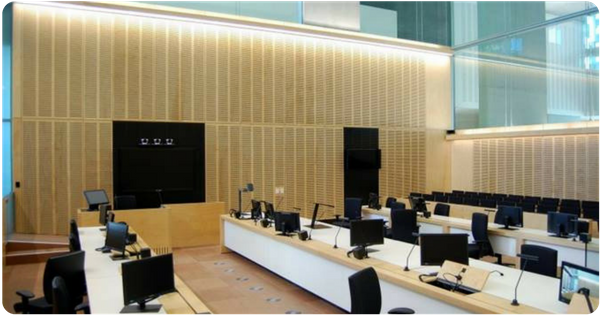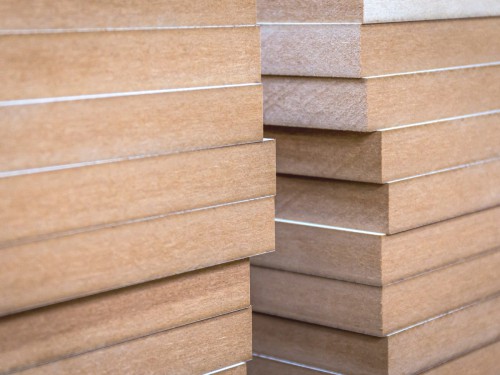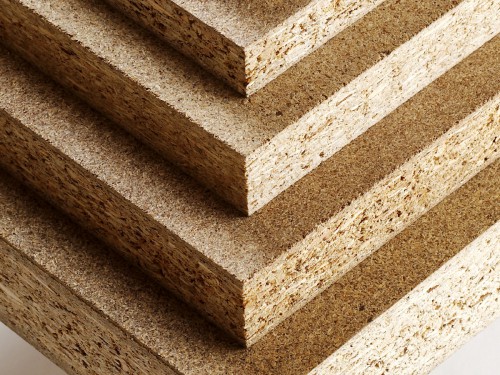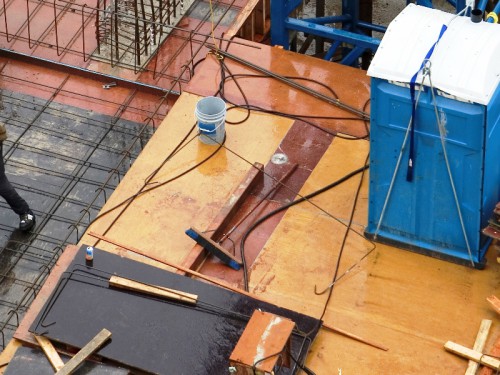Plywood is a product made up of numerous thin strips of wood, known as veneers. These veneer sheets are layered on top of each other, with the grain of each alternating sheet running in opposing directions. They are then bonded with glue to form a plywood sheet. This construction method creates a very strong and versatile man-made timber material that is less susceptible to expansion and shrinkage.
The majority of plywood is made from an odd number of layers, called plies, typically 3, 5, or 7, with an equal number of plies on each side of the center ply.
One side of the plywood sheet is known as the “face,” which is usually the side seen in most applications and is generally of superior quality. The other side is known as the “back” and may be rougher or less appealing. However, you can also purchase plywood with two good sides for applications where both sides will be visible.
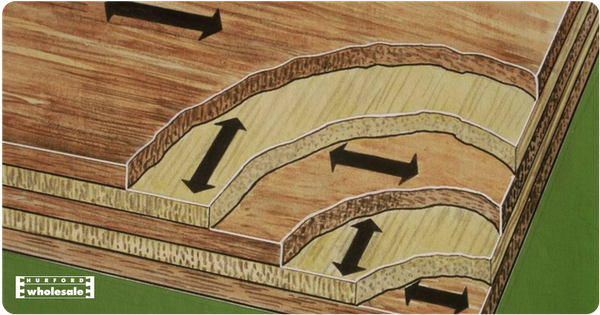
General Information
Plywood is available in various lengths, widths, and thicknesses. Standard dimensions for length are typically 1800mm, 2400mm, and 2700mm, while the width is generally 1200mm. Sizing can be in either imperial (e.g., 2440mm) or metric (e.g., 2400mm) measurements.
Thicknesses range from 3mm to 28mm, with options such as 3mm, 4mm, 6mm, 7mm, 9mm, 12mm, 15mm, 17mm, 18mm, 19mm, 20mm, 21mm, 25mm, and 28mm. It’s important to note that thicknesses may vary between different manufacturers and products.
When specifying plywood, the following information should be supplied:
- Dimensions
- Type of Plywood
- Structural Rating (where required)
- Veneer Grade
- Glue Bond
- Treated or Untreated
Glue Bonds
Glue Bonds
Plywood is manufactured with different types of glue bonds, categorized by their durability. Here are the four main types, listed in decreasing order of durability:
Type A: This bond is made from a phenol formaldehyde resin, which sets permanently under controlled heat and pressure. Type A provides a permanent bond that remains unaffected by heat, cold, or wet conditions. It is primarily used for marine plywood, structural plywood, and exterior plywood that will be exposed to long-term wet or damp conditions.
Type B: Produced from melamine fortified urea formaldehyde resin (MUF), Type B sets under controlled heat and pressure. It is suitable for plywood intended for up to two years of full exposure to weather, such as in formwork plywood or exterior doorskins.
Types C & D: These are produced from urea formaldehyde resin (UF) and set under controlled heat and pressure. They are interior bonds and are not recommended for use in exterior conditions. Even for interior purposes, Types C and D should not be used for structural applications. For areas such as around sinks, vanities, and laundry tubs, Type A bonded plywood is recommended.
Veneer Grades
Veneer Grades
There are four main veneer qualities specified for plywood and these are:
 Grade A
Grade A
A high quality appearance grade veneer suitable for clear finishing.
Applications
Textured exterior cladding Interior wall lining Interior ceiling lining Furniture & joinery
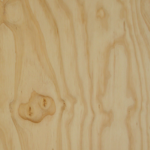 Grade B
Grade B
An appearance grade suitable for high quality paint finishing.
Applications
Furniture & joinery Concrete formwork Primary sheathing Signs Engineered components
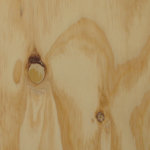 Grade C
Grade C
A non-appearance grade with a solid surface. All imperfections such as knot holes or splits are filled.
Applications
Concrete formwork Gussets Roof decking Flooring Sub sheathing Bins, boxes & crates Stressed skin panels Hoardings
 Grade D
Grade D
A non-appearance grade with permitted open imperfections. Limited number of knots and knot holes up to 75mm wide are permitted.
Applications
Structural components Beams & portals Roofing Bracing Utility buildings
Stress Grades
Stress Grades
Each stress grade is equally satisfactory for use in structural applications. The higher the stress grade, the thinner the plywood requirement will be to perform the same structural function.
The following table is a guide to the thicknesses and stress grades required for typical applications:
| Application | Thicknesses | Stress Grade |
| Lining panels | 3 – 15 | N/A |
| Residential flooring | 13, 15, 17 | F11, F14 |
| Industrial flooring | 17 – 25+ | F11 – F22 |
| Diaphragms | 9 – 15 | F11, F14 |
| Bracing (shearwalls) | 3 – 15 | F11, F14, F27 |
| Box beams | 7 – 12 | F11, F14 |
| Portal frame gussets | 12 – 25 | F11, F14 |
Treatment Options
ACQ
Ammoniacal Copper Quaternary – ACQ is a water based preservative that prevents decay from fungi and insects
- Used with veneers
- 100% take-up
Envelope – LOSP / CCA
- Not 100%
- Cut edges have to be chemically re-treated
Systems & 'H' Levels
| Level | Application | Type | Against | Process |
| H2 | Above Ground | Perigen | Termite | Veneer 100% |
| H3 | Above Ground | Ruply / AQ | Anti-Rot / Termite | Veneer 100% |
| H3 | Above Ground | LOSP / CCA | Anti-Rot / Termite | Envelope |
| H4 | Ground Contact | CCA / ACQ | Anti-Rot / Termite | Envelope |
| H5 | In Ground Contact | CCA | Anti-Rot / Termite | Envelope |
Perforation and Laser Cutting
Many panel products can be perforated with either holes or slots to enhance their sound attenuation properties. These perforated panels find applications in various settings where sound control is important, such as internal ceiling and wall linings in schools, public halls, gymnasiums, offices, and commercial premises. Decorative timber veneers are commonly used for perforated panels, offering both functionality and aesthetics.
Standard ranges of hole sizes and patterns are available, allowing specifiers to tailor the panels to meet the specific sound requirements of any given area.
Additionally, laser cutting offers unparalleled design flexibility, allowing each project to be custom-designed to suit the space. Laser-cut panels can be used as room partitions and feature panels, adding a touch of elegance and uniqueness to interior spaces.
